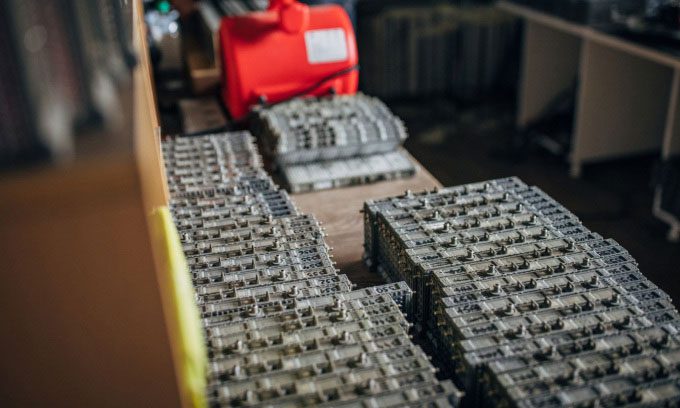Scientists Develop Method to Significantly Restore Original Capacity of Degraded Batteries.
Currently, lithium-ion batteries are the most commonly used rechargeable batteries, powering electric vehicles and everyday devices such as laptops and smartphones. However, over time, they gradually lose their ability to hold a charge, becoming less efficient and less reliable. This degradation occurs because they lose charged particles, or ions, that store and release energy within the battery.

Lithium battery used for electric cars. (Photo: South_agency/iStock)
A team of experts at the Toyota Research and Development Laboratory in Japan has discovered a way to replenish these ions and significantly restore the original capacity of batteries, as reported by Interesting Engineering on March 10. The new research was published in the journal Joule.
Specifically, they inject a special substance known as restoration reagent into the battery. This substance triggers a chemical reaction that produces more electrons and lithium ions. These two types of charged particles help the battery store energy. By replenishing these particles, the research team was able to reverse the degradation process of the battery and restore 80% of its initial capacity. The restored battery can maintain its performance over 100 charge-discharge cycles.
The research team tested the new method on various types of batteries, both small and large, including those used in cars. “The effectiveness has been verified not only with small laboratory batteries but also with large batteries used in vehicles,” said Nobuhiro Ogihara, the lead scientist of the study.
This new method could extend the lifespan of lithium-ion batteries, allowing them to be reused in electric vehicles or other devices instead of being discarded or undergoing a complicated disassembly and recycling process. This helps save costs and resources while also protecting the environment since lithium-ion batteries contain rare metals such as cobalt and nickel, which are often mined unsustainably.
However, the new method is not applicable to all types of degraded batteries; it is only effective for batteries that have lost ions due to multiple charge-discharge cycles, and not for batteries that have structural damage or other forms of degradation. Additionally, an accurate diagnostic method is needed to determine whether the batteries are suitable for chemical injection.
According to Jacqueline Edge, a researcher studying battery degradation at the Royal Holloway University of London, long-term studies are needed to further understand potential side effects and the safety of injecting chemicals into batteries. The research team has filed a patent application for the new method, attracting interest and funding from several companies and government agencies.


















































